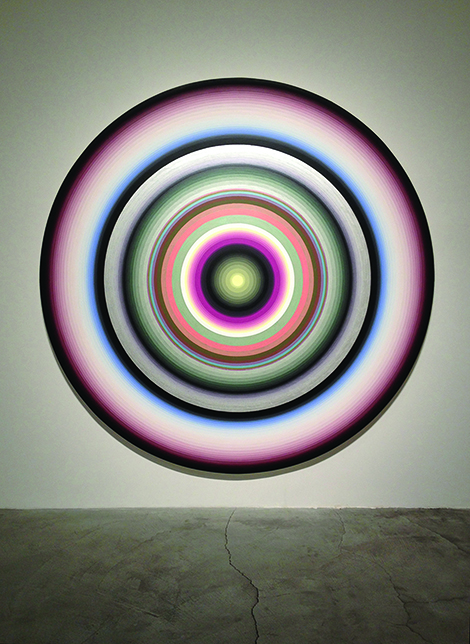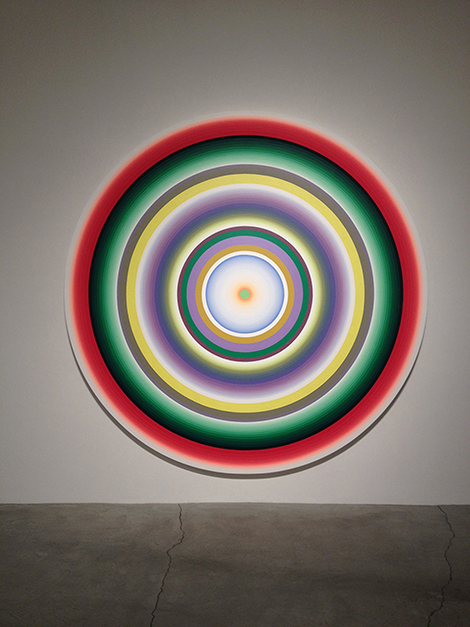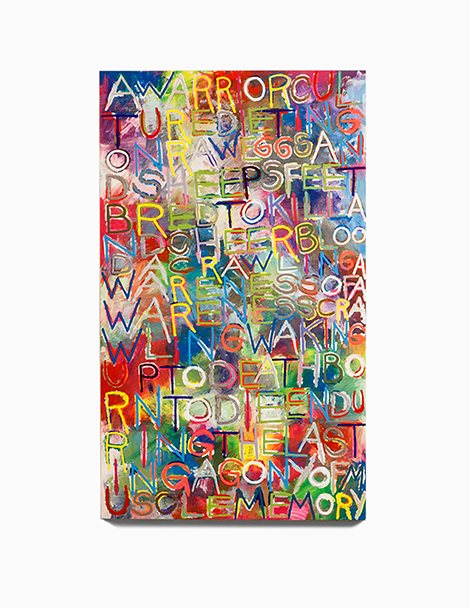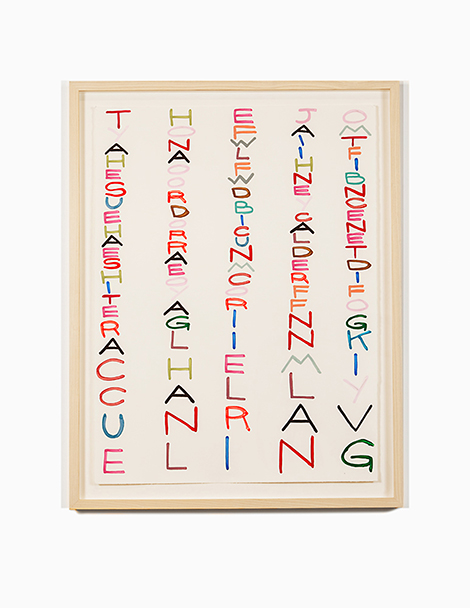The concentric circle, or target, has been one of the predominant motifs in American abstract painting for the last half-century or more, and, as a result, to wring unexpected changes from it has become increasingly difficult.
Gary Lang has made the multi-orbital composition his own neither by ignoring nor by worrying about Kenneth Noland, Jasper Johns, Tadasky, or even Don Suggs, but by pursuing the format as a potentially infinite realm of perception—less a motif or even framework for conceptual examination than as a stage for visual, and tactile, stimulation. Lang, who has been painting circles for over three decades, has personalized his approach to that pursuit, employing intuitive, optically sensitive color sequences and allowing the application of paint to evince his hand.
The results are glorious. They are monumental in size, which at first seems like a challenge to the crowded field of circle painting: Yo, any of you doing it this big? But the impetus to go huge results rather from the inner logic of Lang’s approach. That approach—more akin to Abstract Expressionism than to Color Field painting, Pop, Op or Conceptualism—requires a yawning expanse. Lang’s emphasis on color and touch stresses the experiential over the purely retinal, and calls for a generously roomy, AbEx-like theater of expression. This is wide-screen painting, where jewel-like hues and forms take on planetary scale. Launching from the rings of Noland, Lang aims for the rings of Saturn.
Beyond the structural constraint of concentric banding, Lang fills his paintings with luminous colors and often magical transitions. He is unafraid to be beautiful, perhaps because he knows that, at this scale and in this non-compositional condition, he can trust himself to make choices that can surprise him as much as they do us: the results will be breathtaking, no matter how flat or discordant, and it is the work’s consistently experimental nature, as well as its presence, that gives it its meaning.
Lang has been making word paintings for even longer than he’s been doing circle paintings, going back to the heyday of conceptual art. If his approach to painting words has remained as consistent as has his approach to circles, then he can claim a subversive role in language-based visual art. The works shown recently at ACE Gallery refuse the graphic tidiness of most language work, instead taking the same spontaneous approach to color and rendition as seen in the circles—indeed, letting tone and gesture rip along with the ideas and passions explicated in the words themselves. As a result, the words, coursing up and down the visual field in a persistently flamboyant hand, are hard to read and engage the viewer in a crossword-puzzle-like game of decoding. The visual experience is hardly transcendent, certainly in comparison with the circle paintings, but is more than mere fun (or annoyance): Lang’s rants, comic in their bluster, have a genuinely furious edge to them, and speak to—well, yell at—various unhappy social circumstances of our time, their ire given depth by their blasting color and rampant calligraphy.






















0 Comments